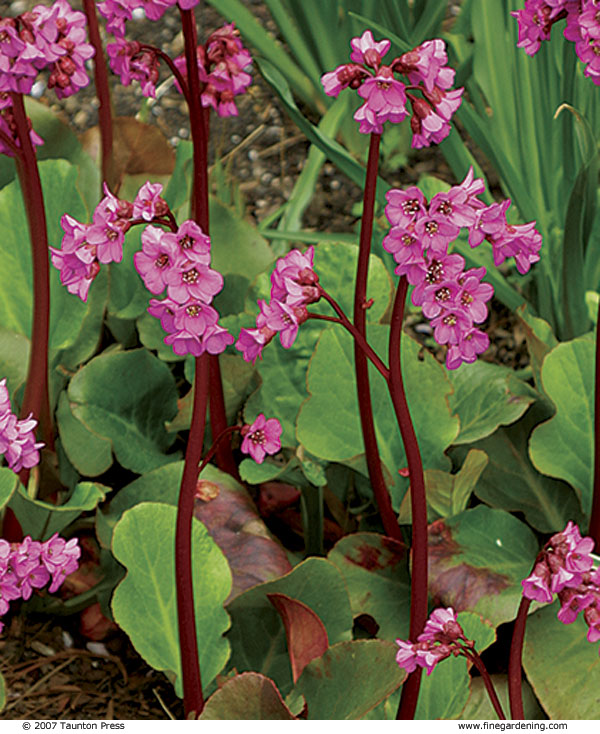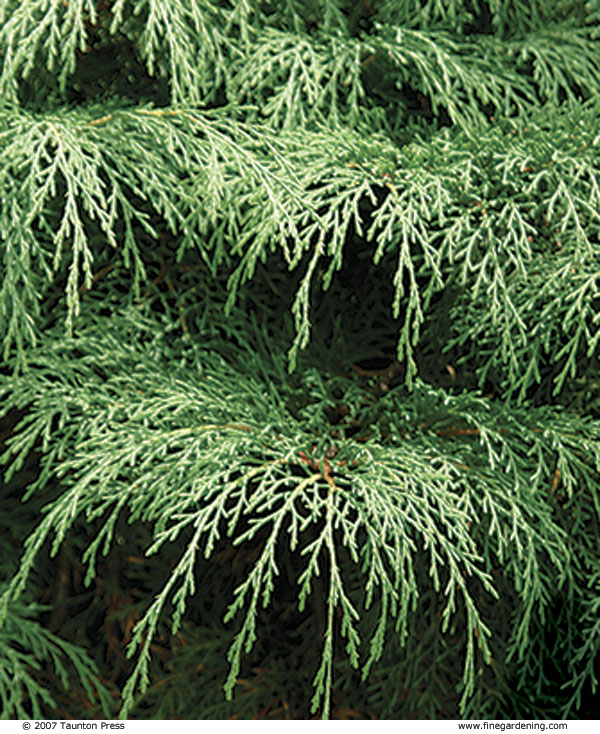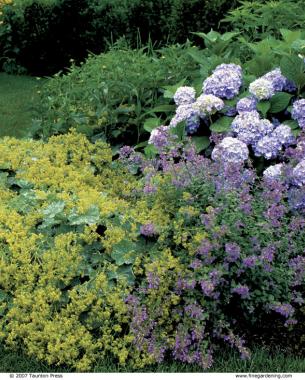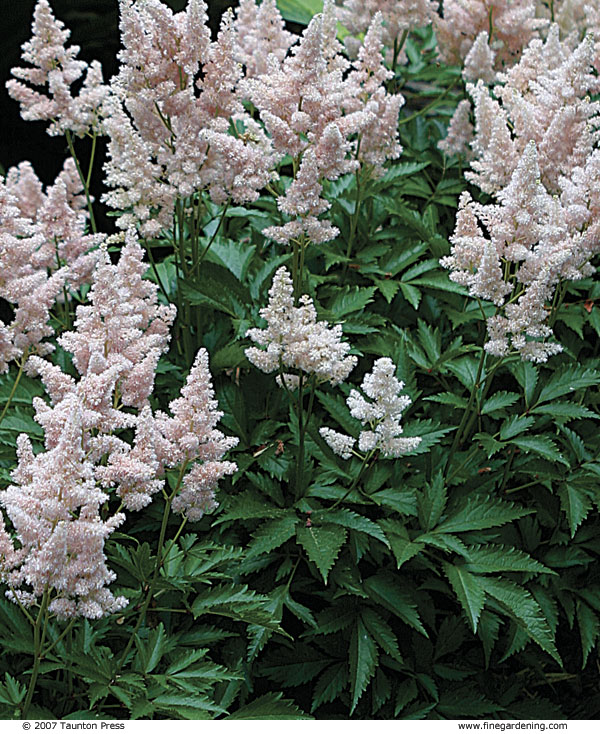Garden design is far more than just choosing appropriate plants for the site and properly spacing them in well-prepared soil. It’s about creating an energy or mood that makes the owner or visitor feel comfortable and connected to the surroundings. As a garden designer, one way I do this is by selecting plants for their personality rather than just by whether they grow in sun or shade. I consider the demeanor that is portrayed through their weepy forms or jagged leaves. By looking at plants in terms of the personalities they convey, you can match them with how you want to feel in your outdoor spaces. For example, you might want to feel relaxed and unpretentious in your bedroom garden but upbeat and energized in your more-social backyard.
Identifying how you want to feel in the garden and personalizing that feeling is critical because what can set a specific mood for one person may evoke a different mood in someone else. A cool, soothing space might be a green lawn for one person and the understory of a large tree for another. The most effective use of plant personalities triggers personal associations and gives that “warm and fuzzy” feeling.
Just as what can trigger different garden moods varies from person to person, so does how we interpret and define plant personalities. If you look closely, however, you can pinpoint traits that make up a personality or desired effect. Certain characteristics, like a stiff posture, subtle fragrance, or colorful exterior, can clue you into the personality of a plant. Once you begin to recognize these markers, you can choose plants that have a personality that is calm, lively, or anything in between. Let’s take a look at five personalities that I regularly use to set a mood and personalize garden spaces.
To learn more
Relaxed plants are a welcome addition to private spaces

For many gardeners, their space is a place to escape to and unwind. One of the best ways to heighten this feeling is with the introduction of “relaxed” plants, those with a loose, graceful presentation and that are not fussy or terribly detailed. They like to remind us to put the pruners down or close the laptop and enjoy the simple pleasures in life. The best relaxed plants require low maintenance so that we don’t feel like we have to get up and do something every time we look at them.
Relaxed plants typically feature arching stems and an open, branching structure. Their leaves are often smooth or formed into simple shapes with sleek edges, which are part of an overall downward pattern that leads to the ground and reminds us to come down and rest. They do not display sharp or arresting color variations. It’s always a bonus if their flowers release a fragrance that provides an aromatherapeutic effect. A mix of mainly relaxed plants is often a welcome addition to private gardens near a bedroom, study, or dining room.
Relaxed plants to consider




Photo/Illustration: Michelle Gervais
Brunneras ( Brunnera macrophylla and cvs., USDA Hardiness Zones 3–7)
Japanese forest grasses ( Hakonechloa macra cvs., Z 5–9)
Calla lilies ( Zantedeschia spp. and cvs., Z 8–11)
Lilyturfs ( Liriope spp. and cvs., Z 6–10)
Herbaceous peonies ( Paeonia spp. and cvs., Z 3–8)
Pigsqueaks ( Bergenia spp. and cvs., Z 3–9)
Hostas ( Hosta spp. and cvs., Z 3–9)
Siberian cypress ( Microbiota decussata , Z 3–7)
Charismatic plants are the perfect garden greeters

Charismatic plants add punch to the garden with their robust, striking habits that surge upward from the earth. They command attention and exude a hearty zest for life. Their habit is not completely rigid; it is, instead, flexible and willing to dance with a gust of wind. Their leaf forms and colors can be quite varied but should always stimulate the eye. The blooms of these gems are bright and face outward; they look directly at you as if to say, “Come and play with me!” Charismatics make the perfect garden greeters at the entry points of your house or outdoor spaces. They are the icing on the cake in areas frequented by children, and they bring a lively energy to pool patios or other social settings, especially if you can use them in masses.
Charismatic plants to consider



Bananas ( Ensete and Musa spp. and cvs., Zones 8–11)
Miscanthus ( Miscanthus sinensis cvs., Z 4–9)
Cannas ( Canna spp. and cvs., Z 8–11)
Pineapple lilies ( Eucomis spp. and cvs., Z 8–11)
Cardoon ( Cynara cardunculus , Z 7–10)
Red-hot pokers ( Kniphofia spp. and cvs., Z 5–9)
Dahlias ( Dahlia spp. and cvs., Z 9–11)
Tapiocas ( Manihot spp. and cvs., Z 7–11)
Reliable plants are the aristocrats of the plant world

Photo/Illustration: Susan A. Roth
Sometimes all we need is reliability in the garden—not glitz or glory, just some solid plants that will get the job done. Reliable plants are generally unchanging and well grounded, with dense or tightly grouped leaves and insignificant flowers. They provide calm assurance that all is right with the world and that there will be no surprises: What you see is what you get. They typically look good all year round.
Reliable plants are ideal for highly trafficked, transitional areas, such as near pathways leading to the front door or along a side yard. They are the aristocrats of the plant world and work well in formal or conservative settings, announcing that all is under control and properly in order. They are happy to be grouped together or combined with more flamboyant plant personalities or eccentric garden sculptures. They don’t mind letting others take the stage while they create an unobtrusive backdrop.
Reliable plants to consider

Photo/Illustration: Michelle Gervais

Photo/Illustration: Michelle Gervais


Photo/Illustration: Michelle Gervais
Boxwoods ( Buxus sempervirens and cvs., Zones 6–8)
Japanese pieris ( Pieris japonica and cvs., Z 6–8)
Heathers ( Calluna vulgaris cvs., Z 4–7)
Junipers ( Juniperus spp. and cvs., Z 2–9)
Himalayan blueberry ( Vaccinium moupinense , Z 5–10)
Rhododendrons ( Rhododendron spp. and cvs., Z 5–9)
Japanese hollies ( Ilex crenata and cvs., Z 5–7)
Spruces ( Picea spp. and cvs., Z 2–8)
Edgy plants stir the pot in any setting

Many good garden designs are not made up of just one personality type; they contain a pleasing combination of contrasting and harmonious plant personalities to intensify the drama. When mixing personalities, I often look to secondary personalities to complete the picture. Secondary personalities are concentrated characters that you may not want to fill a whole room with but that can be intermittently introduced to swing the mood one way or the other. One of my favorite secondary personalities is “edgy.”
At first glance, edgy plants may make you think twice about coming too close. Their leaves are often swordlike or come equipped with thorns, pointy tips, or well-defined edges. With their unusual forms and arresting colors, however, most people can’t help but be intrigued. These provocative beauties keep visitors on their toes and are an indication that an adventurous, unconventional gardener tills the earth here. An infusion of edgy plants works well in any area where you’d like to stir the pot and add some excitement.
Edgy plants to consider

Photo/Illustration: Michelle Gervais

Photo/Illustration: Steve Aitken


Agaves ( Agave spp. and cvs., Zones 9–11)
Globe thistles ( Echinops spp. and cvs., Z 3–9)
Bear’s breeches ( Acanthus spinosus and cvs., Z 5–9)
Italian arum ( Arum italicum , Z 7–9)
Cacti ( Opuntia spp. and cvs., Z 11)
Sea hollies ( Eryngium spp. and cvs., Z 3–11)
Elephant’s ears ( Alocasia spp. and cvs., Z 10–11)
Yuccas ( Yucca spp. and cvs., Z 4–11)
Sociable plants play nicely with everyone

Photo/Illustration: Dency Kane
Like edgy plants, “sociables” are another mood swinger in the garden. They are a secondary personality that is always welcome and doesn’t take itself too seriously. Their growth forms are flexible and can often be found cavorting along the ground or weaving between more-rigid plants in order to show their best side. These good-natured plants have almost a comical energy and play well with other personalities in every type of planting scheme, whether it’s a long, mixed border that extends across the back of your property or a small bed next to the mailbox.
Keeping personalities in mind when making your plant selections is an easy way to set the mood that you’re hoping to achieve. In some cases, you will recognize plants that can perform double duty with multiple personalities, like the forms of sociable yet relaxed black mondo grass (Ophiopogon planiscapus ‘Nigrescens’, Zones 6–11) or edgy, charismatic New Zealand flaxes (Phormium spp. and cvs., Zones 8–11). Before long, you will be able to use this fresh perspective to mix and match plants in a manner that’s more akin to a family reunion or a fabulous dinner party, creating a garden space that strikes a cord and feeds your soul everyday.
Sociable plants to consider




Photo/Illustration: Michelle Gervais

Photo/Illustration: Stephanie Fagan
Asters ( Aster spp. and cvs., Zones 4–8)
Lady’s mantle ( Alchemilla mollis , Z 4–7)
Astilbes ( Astilbe spp. and cvs., Z 3–8)
Maidenhair fern ( Adiantum pedatum , Z 3–8)
Bigleaf hydrangeas ( Hydrangea macrophylla and cvs., Z 5–9)
Spireas ( Spiraea spp. and cvs., Z 4–9)
Catmints ( Nepeta spp. and cvs., Z 3–8)
Yarrows ( Achillea spp. and cvs., Z 3–9)
Fine Gardening Recommended Products

A.M. Leonard Deluxe Soil Knife & Leather Sheath Combo
Fine Gardening receives a commission for items purchased through links on this site, including Amazon Associates and other affiliate advertising programs.

















Comments
I once thought I disliked lilyturf, but we have some 50-year-old lilyturf that is absolutely magnificent. It's in huge clumps that require no care, no watering, no fertilizing, WHATEVER, and which shoot up the most glorious spikes of deep blue flowers late in summer. I have never mowed it, and it just refurbishes itself beautifully each and every spring, no matter what.
"Plants are a very important part of life and a fine gardening website is perfect for someone who is interested in new garden designs.
Getting information online is very easy but implementation is a difficult task.
I want to add the making of garden design as my hobby in my CV and this can be done with the help of professionals who can help me with certified employees manuals that will help me to make my CV more attractive."
Log in or create an account to post a comment.
Sign up Log in